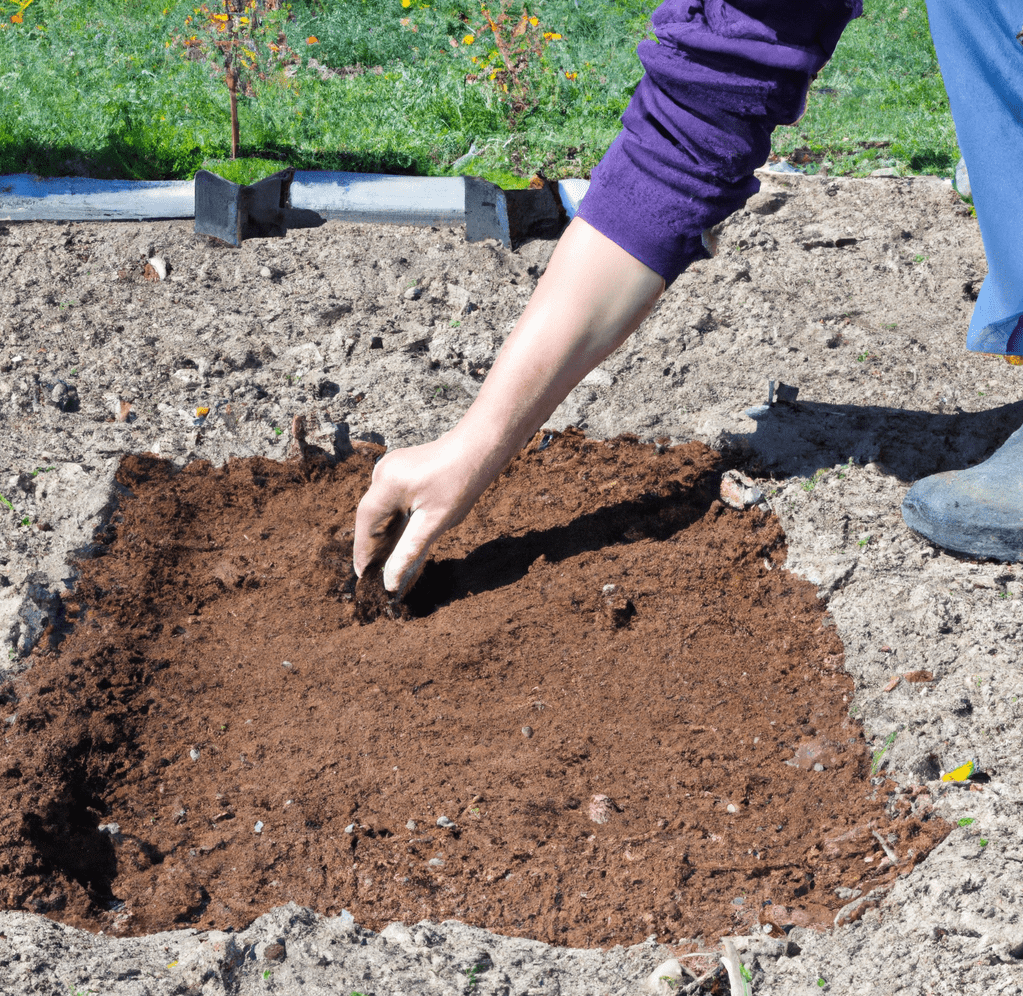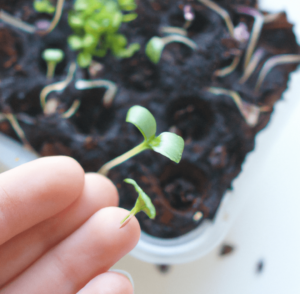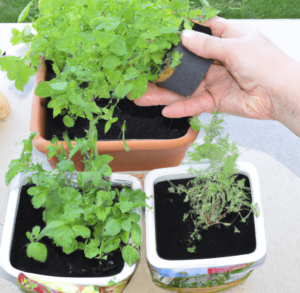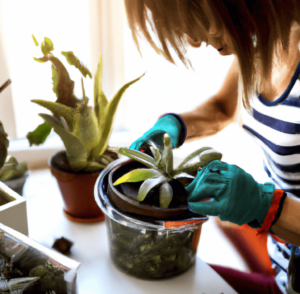Gardening is a great pastime and can be really rewarding assuming you know how to choose the right location for your garden as well as how to prepare your garden bed. If you’re new to the hobby or profession and aren’t all that sure how to do this, we’ll walk you through it!
Assessing the Soil
Digging into the earth in the spring can help you determine the quality of the soil, which is the first step in learning how to prepare your garden bed:
- Dig down between 8 and 12 inches and break up the soil with your hands or a garden fork to begin evaluating the soil.
- Examine the soil’s color, structure, and texture. A balanced mixture of sand, silt, and clay should be present in the loose, crumbly soil that will make up a garden bed. The soil should also be black and rich in organic matter indicating that the soil is strong and capable of supporting plant growth.
There are ways to make your soil better if it doesn’t fulfill these requirements, so don’t worry!

Importance of Testing the Soil pH and Nutrient Levels
Understanding the soil in which you will be growing is essential for building successful garden beds. What plants will grow best and require what kind of care depends heavily on the pH and nutrient levels of the soil? As you learn how to prepare your bed keep the following in mind:
- Knowing the soil pH is crucial for vegetable farming because various vegetables have varied pH requirements for optimum growth. For instance, carrots require neutral soil with a pH of about 6.5 to 7.5, whereas tomatoes need slightly acidic soil with a pH between 6.0 and 6.8.
- Knowing your soil’s nutrient content might also help you to decide what kind, if any, of fertilizer you should add. A soil test will inform you of the levels of nitrogen, phosphorus, and potassium (NPK) in your soil as well as any other nutrients that may be necessary for your plants to thrive.
To put it simply, analyzing the pH and nutrient levels of the soil before planting is an essential step in growing a thriving and fruitful garden.
Steps for Taking a Soil Sample and Sending It to a Lab for Analysis
If you want to learn how to prepare your garden bed but want to take a soil sample, remove weeds and any other debris from the soil’s surface, and if necessary, apply compost. Then follow these steps:
- Choose the location where you want to grow your flowers or crops. It is ideal to collect several samples from various locations across the bed and then combine them to get a more representative sample.
- Dig down 6 to 8 inches into the dirt using a clean shovel or trowel, and then take out a little amount of soil. Repeat this procedure in various bed locations.
- The soil samples should be combined and well mixed in a clean container.
- One cup of the blended soil should be placed in a soil sample bag, which should be marked with your name, address, and any pertinent details about the soil’s location and the plants you intend to grow.
- Send the soil sample to a trustworthy soil testing laboratory for examination. The soil will be examined in the lab for pH, nutritional content, and any potential contaminants that can hurt your plants’ roots.
Understanding the Results and Adjusting the Soil Accordingly
After sending out the results, you can learn how to prepare your garden bed better by understanding what they mean. To encourage plant growth, good soil should have the proper ratio of nutrients, pH, and organic matter. A soil test can determine whether the soil requires additional nutrients or whether the pH is too high or low for particular plants.
With this knowledge, gardeners can add nutrients to the soil or change the pH with lime or sulfur. If the soil is too wet or too dry, a soil test will show it, allowing gardeners to make the necessary adjustments to enhance drainage or preserve moisture.
Choosing the Right Location
Now you can move on to learning how to prepare your garden bed by choosing a place:
- The type of soil in the potential location for your garden will have a significant impact on the health of your plants. Verify the soil’s nutritional content and drainage capabilities.
- Plan your plant beds, taking into account things like wind patterns and sun exposure. To shield shorter plants from strong winds, place taller plants on the north side of the beds.
- Confirm that you have enough room for the size of the garden you want. Remember that plants will grow, so allow space for them to spread out.
- If your soil is deficient in nutrients, you can add compost to it to give your plants the vitamins and minerals they need.
- Consider the plants’ needs for sun exposure and make plans accordingly after you learn how to sow seeds. In order to prevent shadowing, make sure to plant taller plants on the north side of the garden and lower ones on the south.
Factors to Consider When Selecting a Location for Your Garden Bed
When you’re learning how to prepare your garden bed, you may want to look for gardening guides on the following factors:
- Sunlight: Knowing how much sunlight the proposed area will receive is crucial. The majority of plants need at least six hours of sunshine each day to develop effectively. Choose a place that will give you enough sun exposure by taking into account the passage of the sun throughout the day.
- Drainage: Your plants’ health depends on proper drainage. It may be a sign of inadequate drainage and a risk for root rot if the soil in the suggested area is regularly moist. When selecting a place, take into account the soil type and slope of the ground.
- Distance from Water Source: Water availability is essential for your garden. To make watering your plants more convenient, place your garden bed close to a water supply, like a hose or outside faucet.
- Quality of Soil: The success of your gardening efforts depends on the quality of the soil in your garden bed. Make sure the soil is nutrient-rich and has a balanced pH. To increase the fertility of the soil, you might also want to think about adding compost or other organic material.
Removing Existing Vegetation
Gardening means you probably have a duty of removing existing plants from a lawn, garden bed, or any other ground surface in the spring. This can entail eliminating unwanted growth to keep the area appearing orderly or just digging up plants, shrubs, and trees to make room for a new design.
Whatever the motivation, it’s crucial to follow the correct procedures while removing existing vegetation to make sure that everything you’ve learned in how to prepare your garden bed doesn’t go to waste. This may mean making use of the right instruments, using caution when removing roots, and disposing of any waste in the right way.

Removing Weeds, Grass, and Other Unwanted Vegetation
Getting rid of weeds, grass, and other undesired plants from the area is part of learning how to prepare your garden bed. You can use the following techniques:
- Hand pulling: Small garden beds and places with loose, readily worked soil benefit the most from it. Grab the plant close to the base and take it out of the ground, roots and all, by hand.
- Hoeing: Just above the soil line, weeds and other plants are removed with hoes. When weeds are young and haven’t flowered, this method works best in garden beds with a high weed population.
- Herbicides: It’s crucial to pick a herbicide that’s suitable for the kinds of plants you wish to maintain and safe for the environment. Herbicides derived from natural substances are seen to be safer for the environment, thus organic gardeners may prefer to use them.
Amending the Soil
In order to increase the soil’s health and fertility and promote plant growth, amending the soil in your garden is a crucial step before planting. You can learn how to prepare your garden bed and amend the soil by:
- Clearing out any weeds or trash from the planting beds before amending the soil in your garden.
- Evaluate the soil’s state right now.
- Consider using a garden fork to loosen it if it’s compacted or heavy.
- To increase its structure and fertility if it is lacking in organic matter, think about adding compost, peat moss, or other organic ingredients.
- The pH level of the soil should also be taken into account while amending it because it might have an impact on how well your plants develop. You might need to add lime or sulfur to your soil to bring the pH level closer to neutral if it is too acidic or alkaline.
Adding Organic Matter, Such As Compost, to Improve Soil Structure and Fertility
To enhance the structure and fertility of the soil in any garden, you will need to learn how to prepare your garden bed by adding organic matter to it. As it contains a rich mixture of decomposed plant debris, leaves, and other organic materials that will assist to enrich the soil, compost is a fantastic solution for this:
- Start by mixing compost into the top few inches of the soil with a garden fork before adding it to your garden beds.
- The best time to complete this task is in the spring since it will allow the compost enough time to integrate into the soil before the growing season starts.
- Select high-quality compost because your garden will benefit most from it.
- You can also add other organic material, like leaves, grass clippings, or even used coffee grounds if you don’t have access to compost.
Rake and Level the Soil
When you’re learning how to prepare your garden bed, you’ll need to clear the area of any weeds, add compost, then rake and level the soil. The objective is to make a flat, even surface that will give your plants a solid base on which to grow and form strong roots.
Raking the soil can assist get rid of any rocks or clumps that might get in the way of planting. By leveling the soil, you can ensure good water drainage and regular soil depth, which will assist even plant growth. Composting the top layer of soil is advised after raking and leveling it. This will improve the soil and give your plants the nutrients they need.
Bottom Line: How to Prepare Your Garden Bed
Having a garden may be a satisfying and gratifying experience, but it depends on whether or now you know how to prepare your garden bed. There are various processes involved in getting your garden ready for planting, from getting rid of weeds to making sure the soil is healthy which all contribute to your success!
FAQs on How to Prepare Your Garden Bed
Why is learning how to prepare your garden important?
A successful garden is built on the preparation of the soil. By making the necessary preparations, you can be confident that your plants will get the proper nutrients, water, and support they require to grow strong and healthy.
How can I assess the soil’s quality before planting?
You can use a garden fork or your hands to break up the soil between 8 and 12 inches beneath the surface to gauge the soil’s quality. The loose, crumbly soil should be dark and rich in organic matter. Look for a balanced mixture of sand, silt, and clay.
Why is it crucial to test the soil’s pH and nutrient levels?
What plants will grow best and require what kind of care depends heavily on the pH and nutrient levels of the soil? Before you plant, test the soil to help you choose the best plants to grow and how to care for them, resulting in a more fruitful and beautiful garden.
How can I collect a soil sample and submit it for testing at a lab?
A clean shovel or trowel should be used to dig down 6 to 8 inches into the soil, and a small amount of soil should be removed. Then, choose the location where you wish to grow your plants. In a soil sample bag, put one cup of the blended soil made from various samples from various places. Write your name, the location of the soil, and the names of the plants you intend to cultivate on the bag’s label. The sample should then be sent to a reliable soil testing facility for analysis.
How should I interpret the findings of my soil test so that I can modify the soil appropriately?
A soil test will notify you of your soil’s pH, nutritional composition, and any potential contaminants. Making the required adjustments to create a healthy and successful garden will be made easier for you if you are aware of these results. When necessary, add organic material, fertilizers, or other amendments to the soil to produce the ideal pH, nutrient ratio, and soil structure for plant growth.
Why is it crucial to get rid of current vegetation?
In order to keep the space looking neat or to make room for a new design, gardeners frequently remove existing plants in the spring. In order to ensure that the operation is successful and efficient without harming the surrounding region, it is essential to follow the right methods while clearing existing vegetation.
What methods are used to get rid of grass, weeds, and other unwanted vegetation?
There are several methods, including hand pulling, hoeing, and the use of herbicides, for eliminating weeds and other undesirable vegetation from garden beds. Herbicides can be used, but it’s vital to pick one that is safe for the environment and the plants you want to maintain. Hand pulling works best for tiny garden beds with loose soil, hoeing is best for getting rid of immature weeds, and there are other methods as well.
Why is soil amendment important?
Improving the soil’s health and fertility and fostering plant development are both vital. This entails modifying the soil by adding organic matter or fertilizers and assessing its existing condition. For the ideal conditions for plant growth, it’s also important to consider the pH level of the soil.
What advantages does adding organic matter to the soil provide?
The structure and fertility of the soil can be improved by adding organic matter, such as compost. The nutrients in compost, like nitrogen, phosphorus, and potassium, support the growth of robust, healthy plants. Additionally, it aids in enhancing the soil’s ability to retain water, lessens soil erosion, and promotes the development of advantageous soil microorganisms.
Why is soil pH important, and what does it mean?
The term “soil pH” refers to a measurement of the soil’s acidity or alkalinity. While pH levels below 7 are considered acidic and pH values over 7 are considered alkaline, pH 7 is regarded as neutral. Understanding soil pH is crucial because it impacts the availability of nutrients in the soil and various plants require different soil pH levels.
What distinguishes inorganic fertilizers from organic ones?
Synthetic inorganic fertilizers often contain compounds that give plants vital nutrients. Compost is one example of an organic fertilizer that comes from a natural source and is less likely to harm the environment or the soil. Although there is less chance of overfertilization with organic fertilizers, they do take longer to produce results than inorganic fertilizers.
What common garden pests are there, and how can you control them?
Slugs, cutworms, and aphids are common garden pests. You can eliminate them physically, create barriers out of materials like copper strips, or utilize natural sprays like neem oil to manage them. In order to lower the likelihood of pest infestations, it’s crucial to maintain a healthy garden and practice excellent gardening hygiene.







